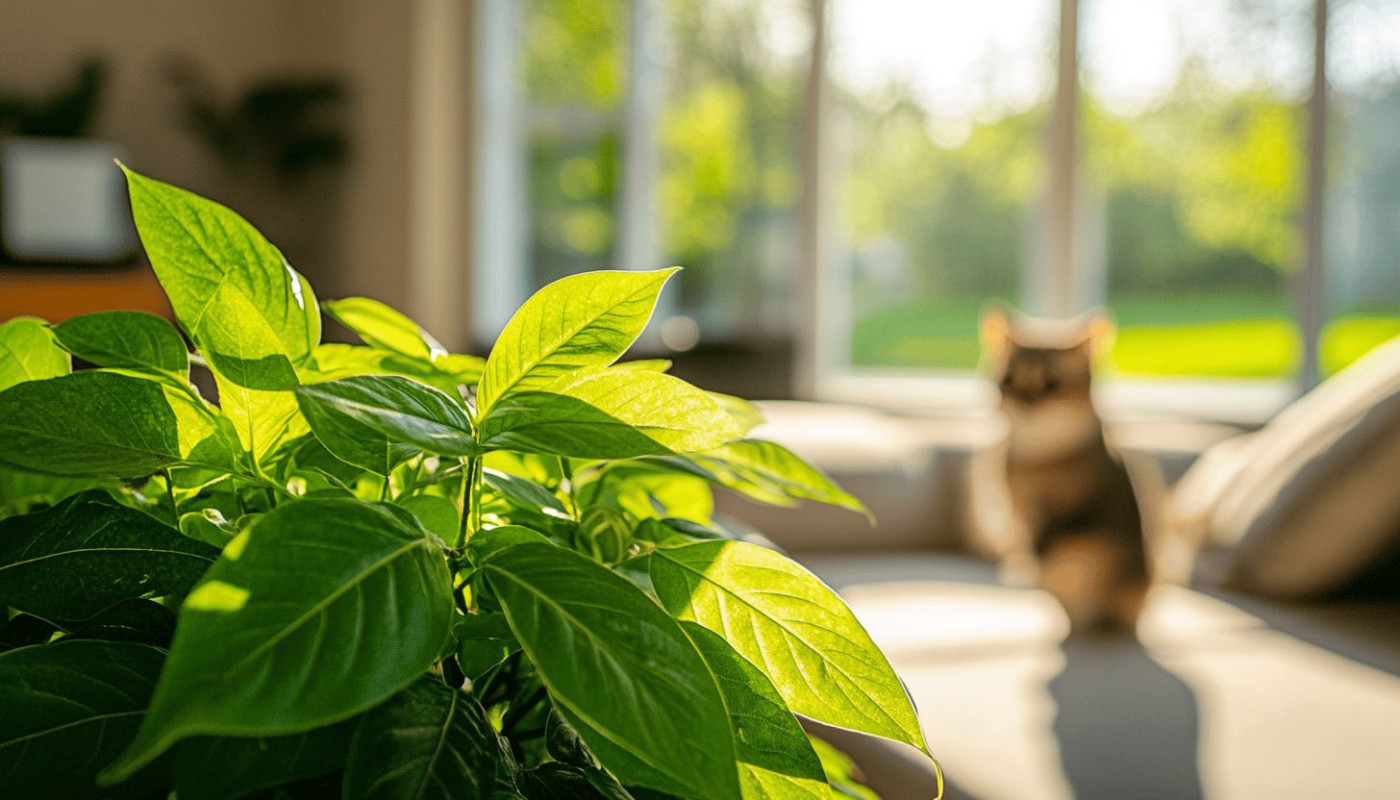Table of contents
Cat owners often face challenges when selecting greenery for their homes, as many common plants are unsafe for feline companions. This blog post delves into a variety of non-toxic plant options that can safely coexist with curious cats. Explore the following sections to uncover safe plant choices, understand their benefits, and create a cat-friendly oasis indoors.
Safe indoor plants for cats
Selecting cat safe plants for your home ensures a harmonious environment for both felines and plant enthusiasts. Many pet friendly houseplants are recognized for their low phytotoxicity, meaning they contain no compounds harmful to cats upon ingestion or contact. Among the most popular non-toxic greenery is Chlorophytum comosum (Spider Plant), which thrives in indirect light and requires moderate watering; its arching leaves add visual interest to any indoor gardening display. Areca palm (Dypsis lutescens) is another feline friendly plant, known for its graceful fronds and adaptability to bright, filtered sunlight with consistent moisture in the soil. Maranta leuconeura (Prayer Plant), with its striking patterned leaves, prefers low to medium light and slightly moist soil, making it ideal for homes with curious cats. The classic Pepperomia species, tolerant of varied lighting and infrequent watering, offer compact foliage perfect for shelves or tabletops. In sum, incorporating these non-toxic, aesthetically pleasing choices not only supports your indoor gardening passion but also safeguards your pets’ well-being while transforming living spaces with lush, vibrant life.
Benefits of cat-safe plants
Introducing non-toxic plants into homes with cats delivers several benefits for both feline companions and their human caretakers. Selecting safe plant choices not only enhances indoor aesthetics with natural decor but also contributes to pet wellness and overall household health. Numerous studies highlight that indoor greenery effectively reduces airborne volatile organic compounds (VOCs), which can otherwise compromise respiratory health for both cats and humans. Botanical enrichment is another key factor: safe plant choices offer sensory stimulation, encourage playful exploration, and help alleviate boredom, all of which are vital for cat health and well-being. Moreover, the presence of plants has been linked to lower stress levels, supporting both mental and physical wellness in pets. Carefully chosen non-toxic species ensure that cats can interact with their environment safely, allowing owners to experience the benefits of indoor plants—like cleaner air and a calming atmosphere—without risking accidental ingestion of harmful foliage. This approach enhances bond-building, supports feline curiosity, and creates a safer, enriched living space for everyone.
Common toxic plants to avoid
When selecting greenery for spaces shared with cats, awareness of toxic plants for cats is key for responsible pet care. Among the most dangerous houseplants are lilies (Lilium spp. and Hemerocallis spp.), which can induce severe kidney toxicosis even from pollen exposure or ingestion of small quantities. Sago palm (Cycas revoluta), common in gardens, leads to acute liver failure and neurological symptoms due to cycasin. Peace lily (Spathiphyllum spp.), pothos (Epipremnum aureum), and philodendron contain insoluble calcium oxalates, which cause oral irritation, drooling, and gastrointestinal upset. Oleander (Nerium oleander), often found outdoors, contains cardiac glycosides resulting in lethal heart arrhythmias. Dieffenbachia and dumb cane also pose a household plant hazard, causing toxicosis marked by oral pain and swelling. Instead of these poisonous flora, opt for pet-safe alternatives like spider plant (Chlorophytum comosum), areca palm, or Boston fern. These non-toxic choices provide greenery without risking feline health. Pet safety tips include thoroughly researching plant toxicity and prioritizing cat-friendly selections to create a safe environment free from accidental toxicosis.
Creating a cat-friendly plant space
Designing a cat friendly home with indoor plant decor demands thoughtful planning to balance beauty, safety, and natural appeal. Embracing biophilic design principles, select non-toxic greenery such as spider plants, Boston ferns, and areca palms for safe plant zones that both humans and felines can enjoy. For optimal plant arrangement tips, elevate delicate foliage on sturdy shelves or hanging planters out of curious paw reach, making sure the structures are secure and stable. Choose heavy ceramic or terracotta containers instead of lightweight plastic to prevent accidental tipping, and consider self-watering pots to minimize spills. To enhance feline proofing, use decorative stones or mesh on soil surfaces to deter digging, and strategically place plants in rooms where cats are less likely to leap. If you need detailed inspiration or further advice on curating safe plant zones, explore resources like https://domestic-cat.com. Combining safety measures with aesthetic elements ensures your indoor plant decor remains both vibrant and pet-friendly, supporting a harmonious living environment for all inhabitants.
Plant care tips for pet owners
Entrusting plant maintenance to an organic horticulturist ensures that pet safe plant care becomes a top priority within homes shared with cats. When caring for indoor plants, select well-draining soil blends tailored to each plant's moisture preference, reducing the risk of root rot and fungal growth. Establish consistent watering schedules based on the species' requirements and environmental conditions; overwatering or underwatering can stress non-toxic plants and make them susceptible to pests. Non-toxic gardening also emphasizes the use of natural amendments, such as compost or coconut coir, to provide nutrients while avoiding synthetic fertilizers that may pose risks to pets. For pest management, employ integrated pest management strategies that combine manual removal, the introduction of beneficial insects like ladybugs, and organic solutions such as neem oil or insecticidal soaps. These organic pest control measures maintain the health of plants without exposing cats to harmful substances, supporting a safe and thriving indoor environment for both flora and feline companions.
Similar


